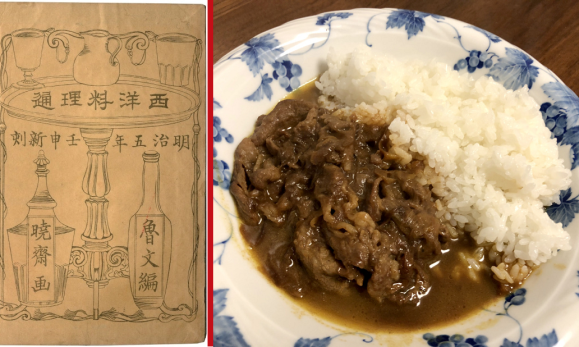
SoraNews24 goes back to the kitchen to go back in time as we taste-test the first written record of how to make curry in Japan.
Curry has become such a ubiquitous part of the Japanese diet that should you walk down a random street in Tokyo, you’re as likely to find a curry joint as you are a sushi or soba restaurant. That popularity has led to modern innovations such as matcha green tea and Attack on Titan curries, both of which we’ve happily eaten.
But today, instead of looking towards the future of Japanese curry, we’re turning our eyes to the past by making Japan’s oldest curry.
As popular as curry is in Japan now, it was entirely unknown until about 150 years ago. When Japan’s years of feudal-government isolationism ended in the late 19th century, it opened up the country not only to foreign science and technology, but foreign food as well.
Curry came to Japan through British sailors, who’d already made the originally Indian dish a staple of their at-sea cuisine. In 1872, the Japanese-language cookbook Western Cooking Michimasa-Second Volume was published, containing 110 recipes for the exotic meals and desserts eaten by foreigners who came to Japan.
Back here in 2018, we recently attended the Tokyo International Antiquarian Book Fair, where we got to look through a copy of the Meiji-period cookbook, which contained entries for:
● Curried Beef or Muten – Powder Sprinkled on Beer Technique
● Explanation of Curried Weel or Fowl Curry Bird Meat Cooked with Curry Powder
After a few moments deciphering the pre-standardized renderings of English loanwords (in modern Japanese, “curry” is written/pronounced カレー/karee, but the cookbook’s text has “curried” as コリード/koriido, for example), we realized we were looking at the two oldest recorded curry recipes in Japanese history, one for beef or mutton and the other for chicken. So we jotted down some notes and headed to the SoraKitchen to cook, and eat, a bit of history.
Since the curry beef/mutton recipe was listed first in the book, we figured it has seniority on the chicken version, so that’s what we decided to make.
Ingredients (as listed in cookbook):
● Meat trimmings
● Spring onions (2)
● Bottor (4.5 loaves)
● Curry powder (1 shitoruto spoon)
● Flower (1 shitoruto spoon)
● Salt (a measure)
● Water or meat drippings
Ingredients we used:
● Beef (200 grams [7.1 ounces])
● Spring onions (2)
● Butter (150 grams [5.3 ounces])
● Curry powder (1 tablespoon)
● Flour (1 tablespoon)
● Salt (1 pinch)
● Water (150 milliliters [5.1 ounces])
Our entire staff was unable to figure out what a “shitoruto spoon” is or was, so we decided to use a tablespoon, under the logic that a teaspoon wouldn’t be enough curry powder to impart enough flavor. Should we ever build a time machine at some point in the future, we’ll be sure to go back and ask the book’s authors what they meant, then come back to the present and update the recipe seen in this article (but since that hasn’t happened yet, you can either assume time travel remains impossible or that we got distracted by something in the past, probably being able to meet real-life ninja).
With our ingredients assembled, it was time to look over the cookbook’s directions.
Directions (as listed in cookbook):
1. Thinly slice the spring onions. Place them in a pot along with the bottor, and sauté until gray in color.
2. Mix the shitoruto spoon of curry with the shitoruto of flour and salt, then add the mixture to the gray spring onions.
3. Thinly slice the meat and place it in the pot. Mix it with the ingredients already there while cooking over a weak flame for 10 minyutes. Add the water or drippings, let simmer on a weak flame for half an hour.
At the risk of sounding arrogant, we’re going to assume that “cook the onions and butter until they’re gray” was either something that got lost in translation from the original British chef’s explanation, or maybe just an odd quirk of historical descriptions of color (maybe “gray-colored onions and butter” is just the cookbook author’s version of Greek poet Homer’s “wine-dark sea”). In any case, we’re not sure we’re talented/terrible enough cooks to get butter to turn gray anyway, so we made a slight change to that part of the recipe, but otherwise stuck to the cookbook’s plan, using a deep frying pan since it was large enough to hold our modestly-sized edible endeavor.
Directions we used:
1. Slice onions, sauté with butter until golden
2. Mix curry powder, flour, and salt. Add mixture to onions and butter.
3. Thinly slice beef and add to mixture. Sauté on low heat for 10 minutes.
4. Add water, let simmer for 30 minutes.
When our curry was done, we poured it onto a plate with white rice occupying the other half, as is the Japanese serving style, and it actually looked pretty tasty, if you’ll forgive us for tooting our own horn.
▼ Begging for forgiveness is a surprisingly common occurrence for us.
Honestly, it didn’t look significantly different from modern curry. As for the taste…
…that’s a different story. For starters, this old-school curry is much saltier than what you’ll find in contemporary Japan. There’s also a bit of bitterness, which we attribute to the onions getting slightly scorched when we tossed the curry powder and flour into the pan. Finally, there wasn’t a trace of the kid-pleasing sweetness found in modern Japanese curries.
Both of those might be problems that you could probably overcome, though. Being extra-slow and cautious when adding in the curry and flour should help prevent singeing, and as for the saltiness, we’re guessing that perhaps the 19th-century British navy didn’t use salted butter like the kind we had in our 21st-century fridge, and an unsalted variety should improve the flavor balance quite a bit.
Still, Japan’s oldest curry has a unique charm all its own, and with the adjustments we mentioned, could be even better. As for the fact that we didn’t think to do those in the first place, we guess that’s just one more piece of evidence that the SoraNews24 of the future still hasn’t sorted out time travel.
Related: Tokyo International Antiquarian Book Fair
Photos ©SoraNews24
[ Read in Japanese ]
Follow Casey on Twitter, where curry for lunch is sounding like an excellent idea.
[ Read in Japanese ]

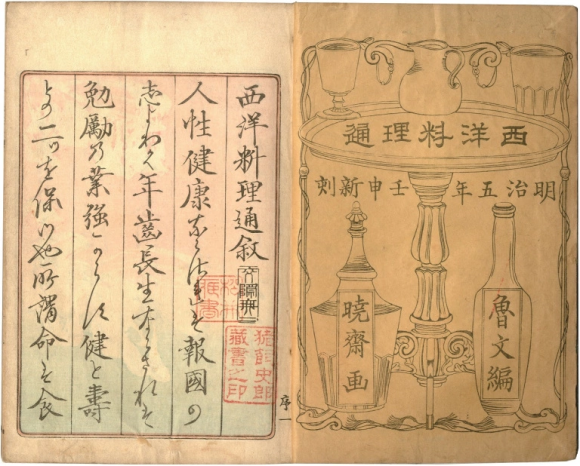
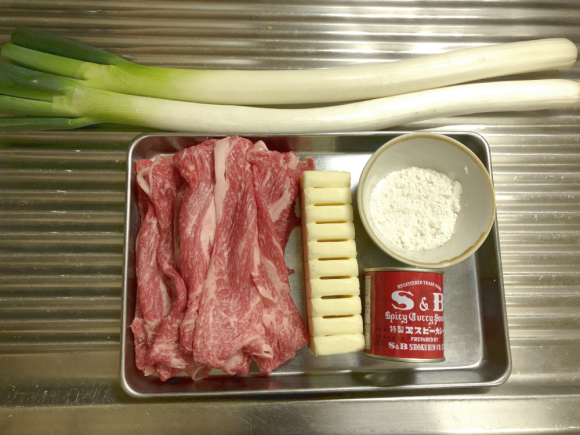

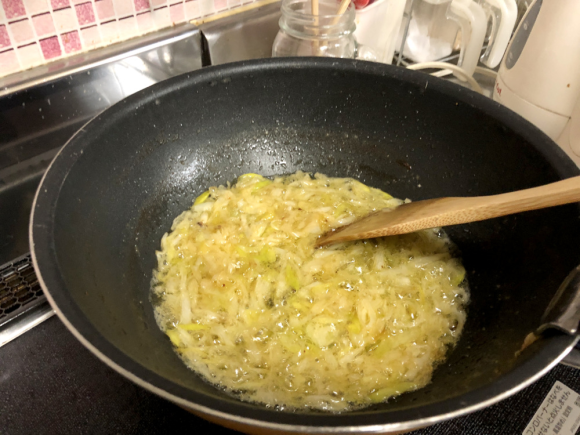
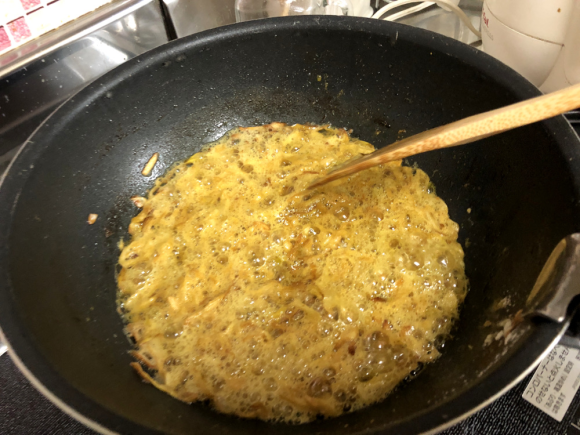
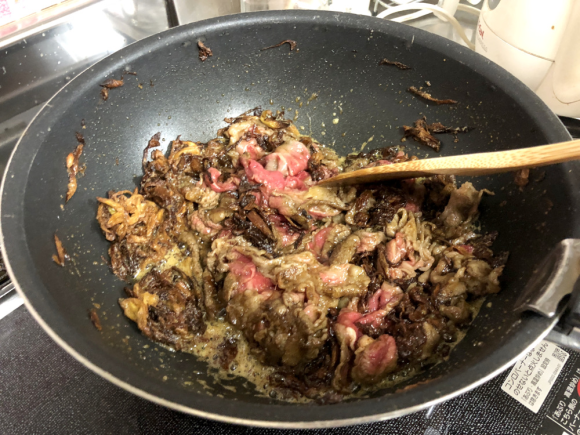
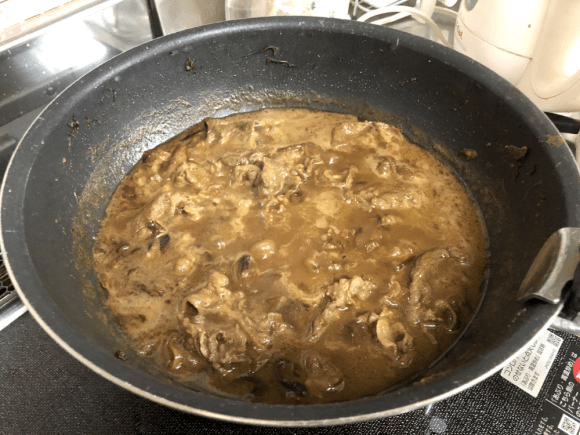
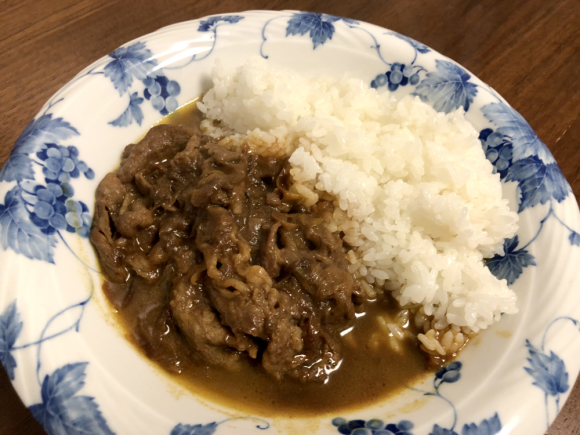
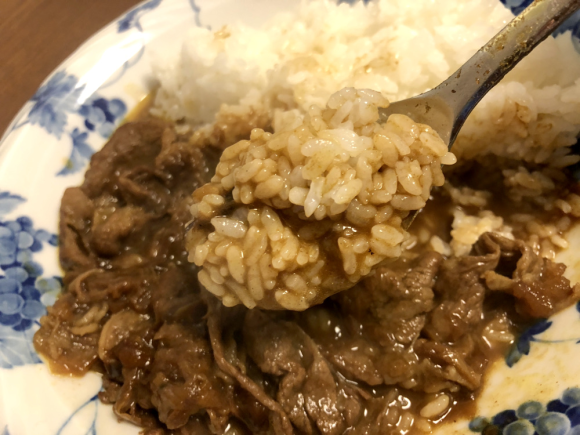
 Watermelon soup? We test out a strangely alluring recipe from Ajinomoto【Recipe】
Watermelon soup? We test out a strangely alluring recipe from Ajinomoto【Recipe】 How to make a “curry rice bowl” using instant oatmeal instead of rice 【SoraKitchen】
How to make a “curry rice bowl” using instant oatmeal instead of rice 【SoraKitchen】 How to make your own Pikachu Burgers!【RocketKitchen】
How to make your own Pikachu Burgers!【RocketKitchen】 How to make awesome Japanese curry in five minutes without using instant packs or even a stove
How to make awesome Japanese curry in five minutes without using instant packs or even a stove No time to cook? No problem! Three easy ways to improve instant curry
No time to cook? No problem! Three easy ways to improve instant curry McDonald’s Japan’s new pancake pie is a taste sensation
McDonald’s Japan’s new pancake pie is a taste sensation Starbucks at Shibuya Scramble Crossing reopens, but is it really bigger and better than before?
Starbucks at Shibuya Scramble Crossing reopens, but is it really bigger and better than before? Bad tourist manners at Mt Fuji Lawson photo spot prompts Japanese town to block view with screens
Bad tourist manners at Mt Fuji Lawson photo spot prompts Japanese town to block view with screens Foreigner’s request for help in Tokyo makes us sad for the state of society
Foreigner’s request for help in Tokyo makes us sad for the state of society Foreign traveler caught trying to sneak into Japan by climbing down rope from cruise ship
Foreign traveler caught trying to sneak into Japan by climbing down rope from cruise ship Studio Ghibli unveils massive T-shirt collection featuring top anime movie characters
Studio Ghibli unveils massive T-shirt collection featuring top anime movie characters Studio Ghibli unveils new goods that tip the hat to The Cat Returns
Studio Ghibli unveils new goods that tip the hat to The Cat Returns A visit to the ordinarily forbidden hall of Nara’s Hasedera Temple【Photos】
A visit to the ordinarily forbidden hall of Nara’s Hasedera Temple【Photos】 One of Japan’s oldest castles now lets travelers spend night on the grounds, drink in its keep
One of Japan’s oldest castles now lets travelers spend night on the grounds, drink in its keep Two things to do, and two things not to do, when leaving a traditional Japanese inn
Two things to do, and two things not to do, when leaving a traditional Japanese inn Red light district sushi restaurant in Tokyo shows us just how wrong we were about it
Red light district sushi restaurant in Tokyo shows us just how wrong we were about it Japanese city loses residents’ personal data, which was on paper being transported on a windy day
Japanese city loses residents’ personal data, which was on paper being transported on a windy day McDonald’s new Happy Meals offer up cute and practical Sanrio lifestyle goods
McDonald’s new Happy Meals offer up cute and practical Sanrio lifestyle goods Japanese ramen restaurants under pressure from new yen banknotes
Japanese ramen restaurants under pressure from new yen banknotes Ghibli Park now selling “Grilled Frogs” from food cart in Valley of Witches
Ghibli Park now selling “Grilled Frogs” from food cart in Valley of Witches New definition of “Japanese whiskey” goes into effect to prevent fakes from fooling overseas buyers
New definition of “Japanese whiskey” goes into effect to prevent fakes from fooling overseas buyers Our Japanese reporter visits Costco in the U.S., finds super American and very Japanese things
Our Japanese reporter visits Costco in the U.S., finds super American and very Japanese things All-you-can-drink Starbucks and amazing views part of Tokyo’s new 170 meter-high sky lounge
All-you-can-drink Starbucks and amazing views part of Tokyo’s new 170 meter-high sky lounge More foreign tourists than ever before in history visited Japan last month
More foreign tourists than ever before in history visited Japan last month New Pokémon cakes let you eat your way through Pikachu and all the Eevee evolutions
New Pokémon cakes let you eat your way through Pikachu and all the Eevee evolutions Disney princesses get official manga makeovers for Manga Princess Cafe opening in Tokyo
Disney princesses get official manga makeovers for Manga Princess Cafe opening in Tokyo French Fries Bread in Tokyo’s Shibuya becomes a hit on social media
French Fries Bread in Tokyo’s Shibuya becomes a hit on social media Sales of Japan’s most convenient train ticket/shopping payment cards suspended indefinitely
Sales of Japan’s most convenient train ticket/shopping payment cards suspended indefinitely Sold-out Studio Ghibli desktop humidifiers are back so Totoro can help you through the dry season
Sold-out Studio Ghibli desktop humidifiers are back so Totoro can help you through the dry season Japanese government to make first change to romanization spelling rules since the 1950s
Japanese government to make first change to romanization spelling rules since the 1950s Ghibli founders Toshio Suzuki and Hayao Miyazaki contribute to Japanese whisky Totoro label design
Ghibli founders Toshio Suzuki and Hayao Miyazaki contribute to Japanese whisky Totoro label design Doraemon found buried at sea as scene from 1993 anime becomes real life【Photos】
Doraemon found buried at sea as scene from 1993 anime becomes real life【Photos】 Tokyo’s most famous Starbucks is closed
Tokyo’s most famous Starbucks is closed One Piece characters’ nationalities revealed, but fans have mixed opinions
One Piece characters’ nationalities revealed, but fans have mixed opinions We asked a Uniqlo employee what four things we should buy and their suggestions didn’t disappoint
We asked a Uniqlo employee what four things we should buy and their suggestions didn’t disappoint Taste testing 7-Eleven Japan’s five frozen curries to see which ones nail it
Taste testing 7-Eleven Japan’s five frozen curries to see which ones nail it Japan’s fried curry hamburger is here, and not quite like anything we’ve eaten before【Taste test】
Japan’s fried curry hamburger is here, and not quite like anything we’ve eaten before【Taste test】 Twitter user shares her cakey creation that looks just like a plate of curry rice
Twitter user shares her cakey creation that looks just like a plate of curry rice Is Muji’s most expensive instant curry worth its price?【Taste test】
Is Muji’s most expensive instant curry worth its price?【Taste test】 Convenience Store Private Brand Showdown: Which of Japan’s Big Three has the best beef curry?
Convenience Store Private Brand Showdown: Which of Japan’s Big Three has the best beef curry? We try making a low-calorie katsu with tofu instead of pork【SoraKitchen】
We try making a low-calorie katsu with tofu instead of pork【SoraKitchen】 Japan’s most popular curry chain now has vegan soup curry, and it’s delicious【Taste test】
Japan’s most popular curry chain now has vegan soup curry, and it’s delicious【Taste test】 Hungry for love – 10 dishes Japanese men want their girlfriends to cook for them
Hungry for love – 10 dishes Japanese men want their girlfriends to cook for them We spice up our fermented soybeans with curry powder flavored natto【Taste Test】
We spice up our fermented soybeans with curry powder flavored natto【Taste Test】 Japan’s Curry Bread Grand Prix award winner is…a dorayaki sweet?
Japan’s Curry Bread Grand Prix award winner is…a dorayaki sweet? Put a unique twist on your oatmeal by turning it into some Japanese comfort food
Put a unique twist on your oatmeal by turning it into some Japanese comfort food Curry for breakfast! Coco Ichibanya, Japan’s favorite curry chain, now has awesome morning sets
Curry for breakfast! Coco Ichibanya, Japan’s favorite curry chain, now has awesome morning sets 103-year-old Japanese curry rice restaurant got dish right a century ago, still serves it today
103-year-old Japanese curry rice restaurant got dish right a century ago, still serves it today Try this easy, low-oil cheese spring roll recipe for your next camping trip (or cheese craving)
Try this easy, low-oil cheese spring roll recipe for your next camping trip (or cheese craving) Our batch of homemade Oreos – Why didn’t we think of this before?
Our batch of homemade Oreos – Why didn’t we think of this before? Japanese restaurant chain shows us how to make katsudon in three minutes【SoraKitchen】
Japanese restaurant chain shows us how to make katsudon in three minutes【SoraKitchen】
Leave a Reply